Overview
Austria, a land rich in history and culture, boasts some of the most stunning historical landmarks in Europe.
From majestic palaces to ancient monasteries, Austria’s historical sites provide insight into the country’s imperial past, religious heritage, and artistic achievements.
Whether you’re a history enthusiast or simply looking to explore, these destinations promise to enrich your understanding of Australia’s fascinating narrative.
Below are the top 15 historical sites in Austria that are worth exploring.
Table of Contents
1. Schönbrunn Palace, Vienna
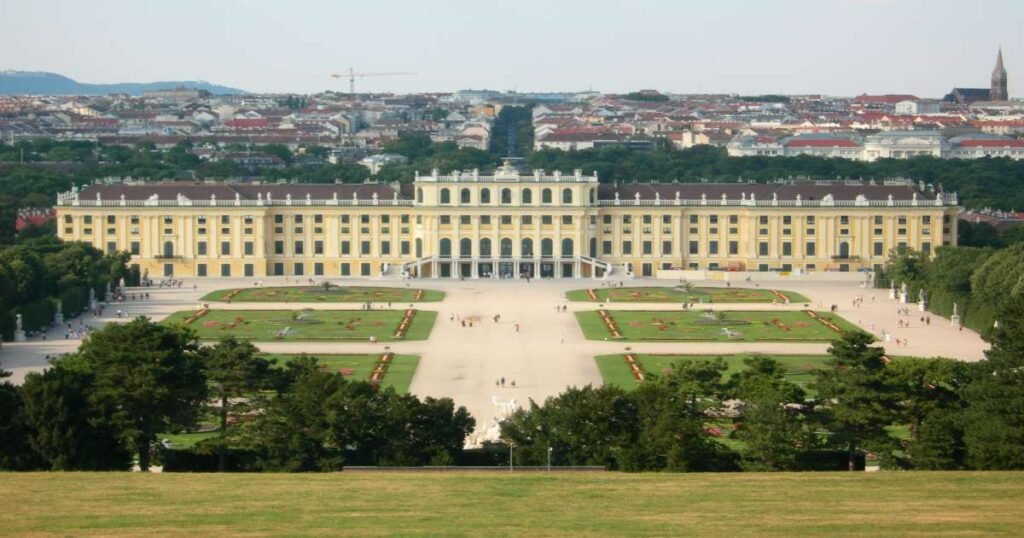
Schönbrunn Palace, located in Vienna, is one of Austria’s most iconic historical landmarks. This sprawling Baroque palace served as the summer residence of the Habsburg emperors and is renowned for its beautiful gardens and opulent interiors.
Historical Significance: Constructed in the 17th century, Schönbrunn became the central seat of Habsburg power. It symbolizes the wealth and influence of the Austro-Hungarian Empire. The palace witnessed key historical events, including political negotiations and the upbringing of Marie Antoinette.
Best Time to Visit: The palace is open year-round, but the best time to visit is from April to October when the gardens are in full bloom.
Travel Tips:
- Transportation: Easily accessible by metro (U4 line) from central Vienna.
- Accommodation: Stay in central Vienna for convenient access to the palace and other attractions.
- Local Customs: Consider purchasing tickets in advance, as the palace is one of the most popular tourist sites in Austria.
2. Hofburg Palace, Vienna

The Hofburg Palace in Vienna is a massive complex that has served as the seat of power for the Habsburg dynasty for over 600 years. Today, it houses museums, the Austrian President’s office, and the Spanish Riding School.
Historical Significance: The Hofburg was the political and cultural heart of the Habsburg Empire. It witnessed significant events in Austrian history, including imperial decrees and royal weddings. The palace embodies the grandeur and might of one of Europe’s most powerful families.
Best Time to Visit: The palace can be visited year-round, though winter (December to February) offers a cozy atmosphere and fewer crowds.
Travel Tips:
- Transportation: Located in the center of Vienna, it’s accessible by foot, metro, and bus.
- Accommodation: Stay in Vienna’s historic district for easy access to the Hofburg and other major sites.
- Local Customs: Don’t miss the Imperial Apartments and the Sisi Museum for an in-depth look at imperial life.
3. Melk Abbey, Lower Austria
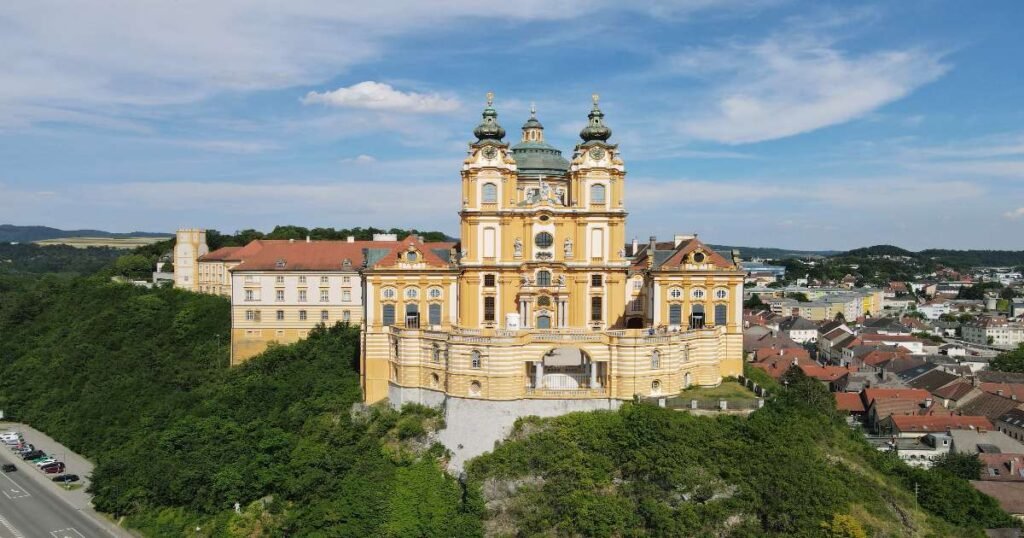
Melk Abbey is a stunning Benedictine monastery perched on a hill overlooking the Danube River. Its golden façade and grand Baroque architecture make it one of the most picturesque historical sites in Austria.
Historical Significance: Founded in 1089, Melk Abbey has been a center of learning and religious devotion for centuries. Its library is renowned for its medieval manuscripts, and the abbey has played a crucial role in Austria’s religious history.
Best Time to Visit: The best time to visit is between April and October when the weather is pleasant and the abbey’s gardens are in bloom.
Travel Tips:
- Transportation: Take a train from Vienna to Melk, followed by a short walk to the abbey.
- Accommodation: Stay in Melk or nearby towns along the Danube for a peaceful riverside retreat.
- Local Customs: Explore the abbey’s museum and library, and take a boat tour on the Danube for stunning views of the monastery.
4. Hohensalzburg Fortress, Salzburg

Hohensalzburg Fortress is one of the largest and best-preserved medieval castles in Europe. It dominates the Salzburg skyline and offers breathtaking views of the city and surrounding mountains.
Historical Significance: Built-in 1077, the fortress was initially constructed to protect Salzburg’s archbishops. Over the centuries, it expanded into a powerful military stronghold. The fortress reflects the city’s strategic importance during the Middle Ages and Renaissance periods.
Best Time to Visit: Visit between May and September for the best weather and to enjoy outdoor performances and concerts held at the fortress.
Travel Tips:
- Transportation: A funicular ride takes you directly to the fortress from central Salzburg.
- Accommodation: Stay in Salzburg’s Old Town for easy access to the fortress and other cultural sites.
- Local Customs: Plan for at least half a day to explore the castle grounds, museums, and panoramic views.
5. Stephansdom (St. Stephen’s Cathedral), Vienna
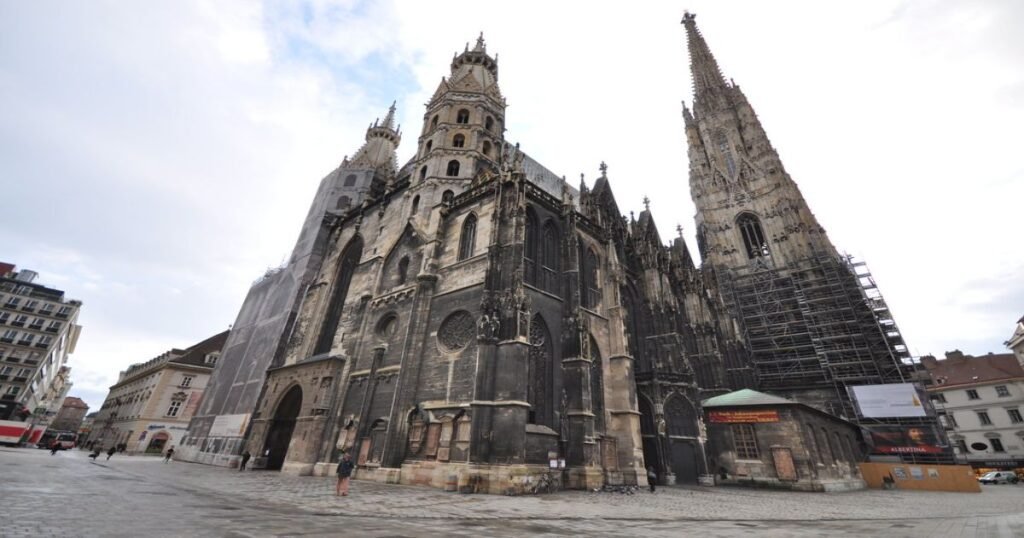
Stephansdom is one of Vienna’s most recognizable landmarks. This Gothic cathedral, with its towering spire and colorful tiled roof, is a masterpiece of medieval architecture.
Historical Significance: Built in the 12th century, St. Stephen’s Cathedral has witnessed centuries of Austrian history, including royal weddings, funerals, and political events. It remains a symbol of Vienna’s religious and cultural identity.
Best Time to Visit: The cathedral is open year-round, but visiting during the spring or early summer ensures comfortable weather for exploring the surrounding square.
Travel Tips:
- Transportation: Located in central Vienna, it’s easily accessible by metro and tram.
- Accommodation: Stay in Vienna’s city center to fully immerse yourself in the capital’s historical and cultural offerings.
- Local Customs: Take a guided tour of the cathedral’s catacombs for a glimpse into its rich history.
6. Krems an der Donau, Lower Austria

Krems an der Donau is a charming town located in the heart of the Wachau Valley, a UNESCO World Heritage site known for its vineyards, medieval architecture, and Baroque churches.
Historical Significance: Krems has been inhabited since Roman times and was an important trade center in the Middle Ages. Its well-preserved old town offers insight into Austria’s medieval past, while its Baroque buildings reflect the prosperity of the region during the 17th century.
Best Time to Visit: Visit between May and September for sunny weather and to experience the Wachau Valley’s renowned wine festivals.
Travel Tips:
- Transportation: Take a train from Vienna to Krems, followed by a short walk to explore the old town.
- Accommodation: Stay in a charming guesthouse in the Wachau Valley for a mix of history and nature.
- Local Customs: Don’t miss the chance to sample local wines from the region’s world-famous vineyards.
7. Eisriesenwelt Ice Cave, Werfen
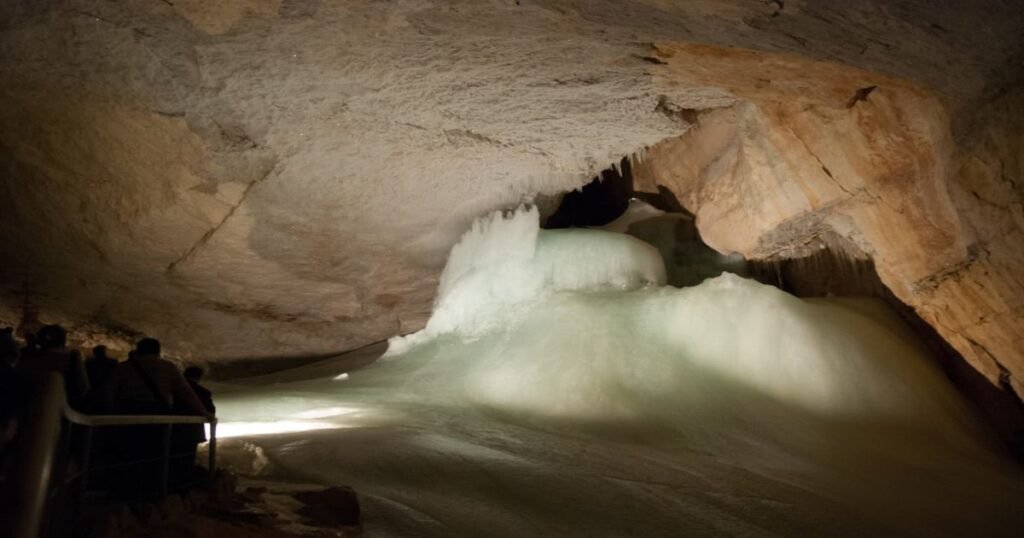
Eisriesenwelt, located near Werfen, is the largest ice cave in the world, stretching over 40 kilometers. It’s a stunning natural wonder that has been attracting visitors for over a century.
Historical Significance: Discovered in the late 19th century, the Eisriesenwelt Ice Cave has become a popular tourist destination, offering a glimpse into Austria’s geological history. It also plays a role in the country’s conservation efforts to preserve its natural landscapes.
Best Time to Visit: The ice cave is open from May to October, and visiting during summer offers the best weather for hiking and exploring the surrounding mountains.
Travel Tips:
- Transportation: Take a train to Werfen, followed by a bus and a cable car ride to the cave entrance.
- Accommodation: Stay in nearby Salzburg or Werfen for access to the cave and other natural attractions.
- Local Customs: Be prepared for chilly temperatures inside the cave, even during summer, and wear appropriate clothing.
8. Mauthausen Concentration Camp Memorial, Upper Austria
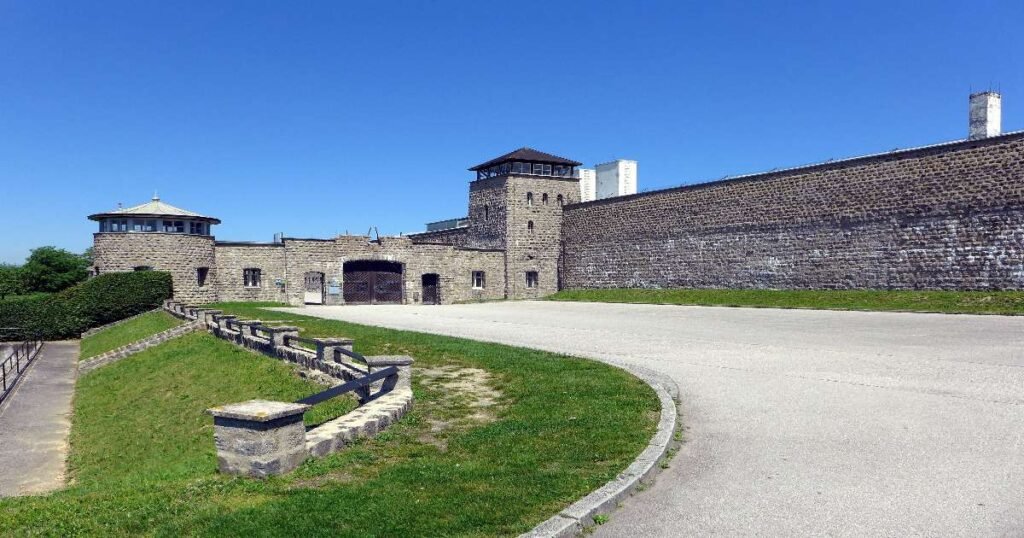
Mauthausen Concentration Camp was one of the largest Nazi concentration camps in Austria during World War II. Today, it serves as a memorial and museum, honoring the memory of those who suffered and perished there.
Historical Significance: From 1938 to 1945, Mauthausen was a site of unimaginable suffering for prisoners from across Europe. The memorial now stands as a powerful reminder of the atrocities committed during the Holocaust and the importance of remembering history to prevent such events from happening again.
Best Time to Visit: The memorial is open year-round, though visiting during spring or autumn offers the most comfortable weather for outdoor exploration.
Travel Tips:
- Transportation: Take a train to Mauthausen, followed by a short bus or taxi ride to the memorial.
- Accommodation: Stay in nearby Linz for access to the memorial and other historical sites in Upper Austria.
- Local Customs: The memorial is a place of reflection and solemnity, so be mindful of respectful behavior during your visit.
9. Schloss Ort, Gmunden

Schloss Ort is a picturesque castle located on a small island in Lake Traunsee, near the town of Gmunden. It’s one of Austria’s most enchanting lakeside castles, with a history dating back over 1,000 years.
Historical Significance: Schloss Ort has been a symbol of Gmunden’s cultural heritage since its construction in the 11th century. The castle has served various purposes over the centuries, including as a royal residence, a hunting lodge, and a cultural venue for events and exhibitions.
Best Time to Visit: Visit during the summer months (June to August) for the best weather to explore the castle and the surrounding lake.
Travel Tips:
- Transportation: Take a train to Gmunden, followed by a short walk to the castle.
- Accommodation: Stay in a lakeside hotel in Gmunden for a peaceful and scenic retreat.
- Local Customs: Don’t miss the chance to explore the castle’s interior and enjoy a boat ride on Lake Traunsee.
10. Seegrotte Hinterbrühl, Lower Austria

Seegrotte Hinterbrühl is an underground lake located near Vienna. Once a gypsum mine, it was flooded in the early 20th century, creating one of Europe’s largest subterranean lakes.
Historical Significance: During World War II, the mine was used as a secret production site for fighter planes by the Nazis. Today, Seegrotte is a popular tourist attraction, offering guided boat tours on the underground lake and insights into its wartime history.
Best Time to Visit: Seegrotte is open year-round, but visiting between April and October ensures milder weather for the tour.
Travel Tips:
- Transportation: Take a bus or taxi from Vienna to Hinterbrühl for easy access to the lake.
- Accommodation: Stay in Vienna and take a day trip to Seegrotte for a unique underground adventure.
- Local Customs: Wear comfortable shoes, as the tour involves walking through tunnels before reaching the lake.
11. Hallstatt, Upper Austria
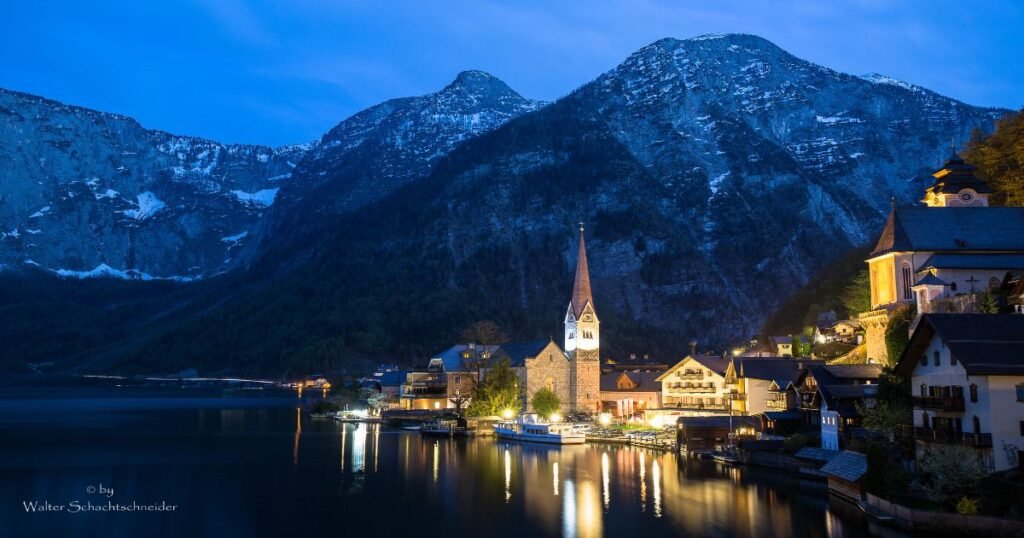
Hallstatt is a small village in Upper Austria, known for its postcard-perfect scenery, including Alpine mountains, a serene lake, and ancient salt mines.
Historical Significance: Hallstatt is one of the oldest continuously inhabited places in Austria, with evidence of settlement dating back over 7,000 years. It became wealthy due to its salt production, and its unique blend of natural beauty and history has earned it UNESCO World Heritage status.
Best Time to Visit: Visit during the spring or autumn months to avoid the summer crowds and enjoy the picturesque surroundings.
Travel Tips:
- Transportation: Take a train or boat from Salzburg to Hallstatt for the most scenic route.
- Accommodation: Stay in a traditional guesthouse in Hallstatt for an authentic experience.
- Local Customs: Be respectful of the village’s peaceful atmosphere and its residents, as Hallstatt is a popular tourist destination.
12. Belvedere Palace, Vienna
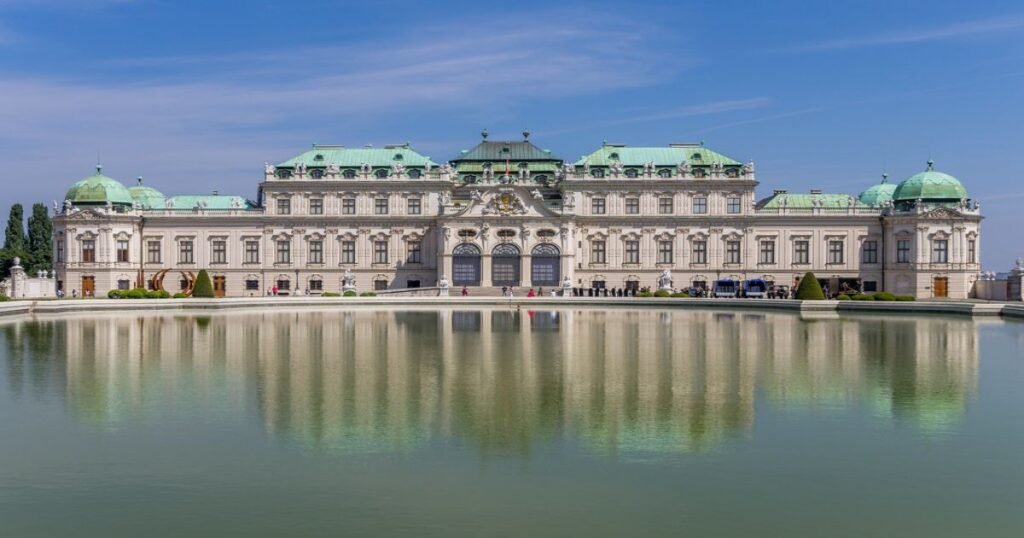
Belvedere Palace is a magnificent Baroque palace complex in Vienna, famous for its lush gardens and extensive art collection, including works by Gustav Klimt and Egon Schiele.
Historical Significance: Built in the early 18th century, Belvedere Palace was the summer residence of Prince Eugene of Savoy. It symbolizes Austria’s military prowess and artistic achievements during the Baroque period.
Best Time to Visit: The best time to visit is in the spring or summer when the palace gardens are in full bloom.
Travel Tips:
- Transportation: Easily accessible by tram or metro from central Vienna.
- Accommodation: Stay in central Vienna to explore the palace and other nearby attractions.
- Local Customs: Don’t miss the chance to view Klimt’s famous painting “The Kiss,” displayed in the Upper Belvedere.
13. Burg Kreuzenstein, Lower Austria

Burg Kreuzenstein is a medieval castle located on a hill overlooking the Danube River. Its fairytale-like appearance makes it a popular filming location for movies and TV shows.
Historical Significance: The castle was originally built in the 12th century but was heavily damaged during the Thirty Years’ War. It was restored in the 19th century by Count Johann Nepomuk Wilczek and is now a popular tourist destination.
Best Time to Visit: The castle is open from April to October, and the best time to visit is during the summer for outdoor activities and tours.
Travel Tips:
- Transportation: Take a train or bus from Vienna to Leobendorf, followed by a short walk to the castle.
- Accommodation: Stay in nearby Leobendorf or Vienna for easy access to the castle.
- Local Customs: Attend one of the castle’s medieval festivals or falconry shows for a unique experience.
14. Mariazell Basilica, Styria
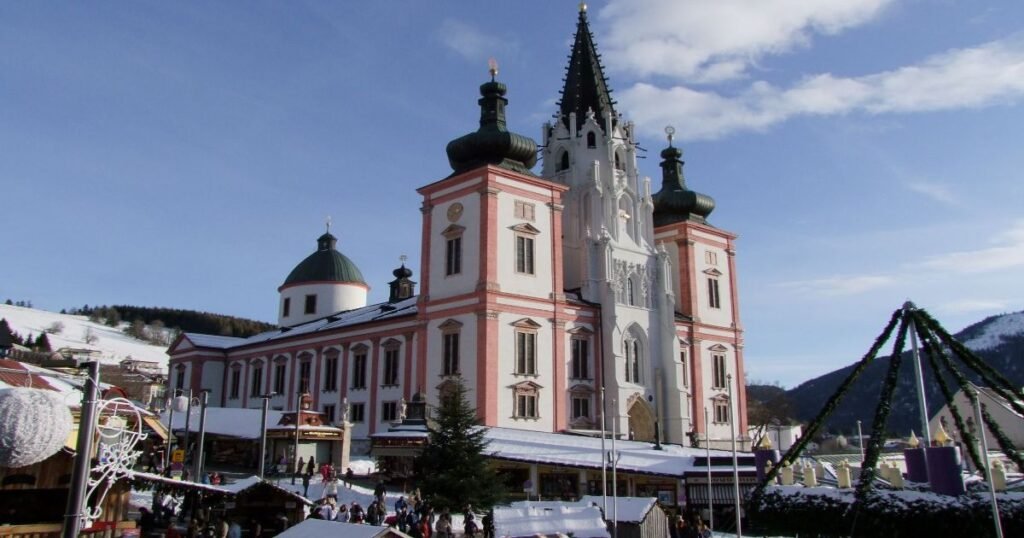
Mariazell Basilica is one of Austria’s most important pilgrimage sites, attracting visitors from all over Europe. Its stunning Baroque architecture and religious significance make it a must-visit destination for spiritual travelers.
Historical Significance: Founded in the 12th century, Mariazell Basilica has been a place of pilgrimage for centuries. It houses the revered statue of the Virgin Mary, believed to have miraculous powers, and remains a center of Catholic devotion in Austria.
Best Time to Visit: The basilica is open year-round, but visiting during a religious festival, such as the Feast of the Nativity of Mary (September 8), adds a special significance to the experience.
Travel Tips:
- Transportation: Take a train from Vienna or Graz to Mariazell, followed by a short walk to the basilica.
- Accommodation: Stay in Mariazell for easy access to the basilica and the surrounding Styrian Alps.
- Local Customs: Be respectful of pilgrims and religious practices, as Mariazell remains an active site of worship.
15. Innsbruck’s Old Town, Tyrol
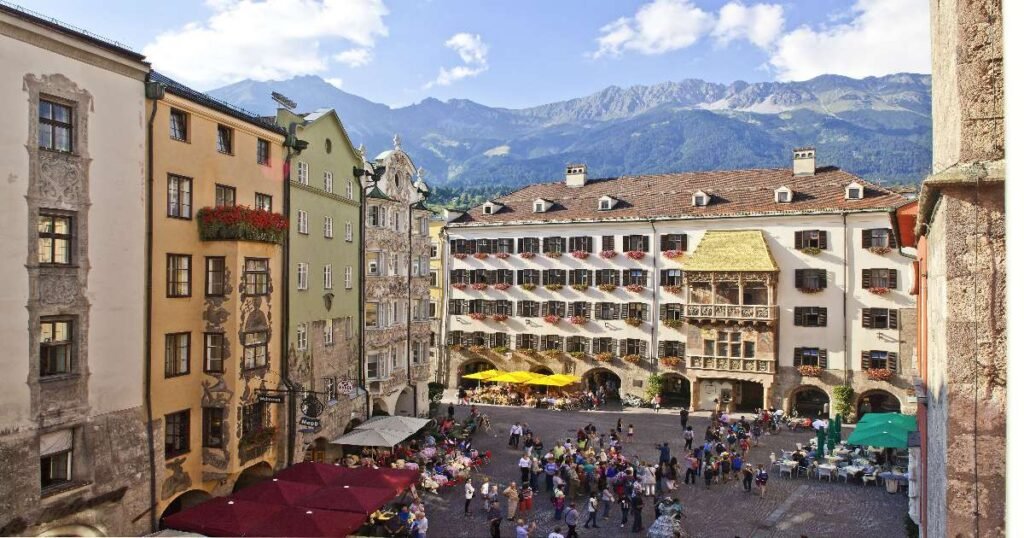
Innsbruck’s Old Town is a charming area filled with medieval buildings, cobblestone streets, and the famous Golden Roof, a landmark covered with gilded copper tiles.
Historical Significance: Innsbruck played a key role in Austria’s medieval and Renaissance history, serving as a hub for trade and politics. The Old Town reflects the city’s rich heritage, with buildings that date back to the 14th and 15th centuries.
Best Time to Visit: Visit during the winter months (December to February) to experience the city’s famous Christmas markets and enjoy winter sports in the nearby Alps.
Travel Tips:
- Transportation: Innsbruck is well-connected by train, making it easy to reach from major Austrian cities.
- Accommodation: Stay in the Old Town for a mix of historical charm and modern amenities.
- Local Customs: Take time to explore the town’s markets and cafés, and don’t miss the opportunity to ski in the nearby mountains.
Also Read: Top 15 Historical Sites in Australia
Conclusion
Austria’s historical sites are a testament to the country’s rich cultural and political history.
From grand palaces and medieval castles to sacred churches and ancient monasteries, these landmarks offer a glimpse into Austria’s imperial past and its deep-rooted traditions.
Whether you’re a history enthusiast or a casual traveler, Austria’s historical gems are sure to leave a lasting impression.
FAQs
1. What is the best time to visit Austria’s historical sites?
The best time to visit is between April and October when the weather is pleasant, and many sites offer outdoor activities and tours.
2. Can I visit Austria’s historical sites in winter?
Yes, many sites remain open year-round, and visiting during winter offers a unique atmosphere, especially in cities like Vienna and Innsbruck.
3. Are guided tours available at most historical sites?
Yes, guided tours are available at many of Austria’s historical landmarks, providing in-depth insights into their history and significance.
4. Is public transportation convenient for visiting historical sites in Austria?
Austria has an excellent public transportation system, making it easy to reach historical sites by train, bus, or metro.

